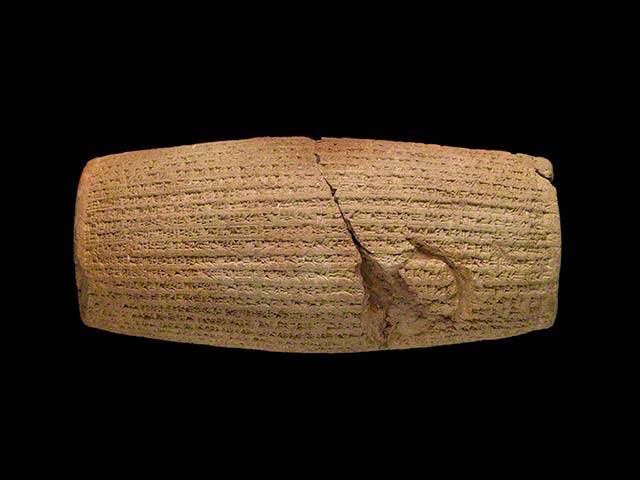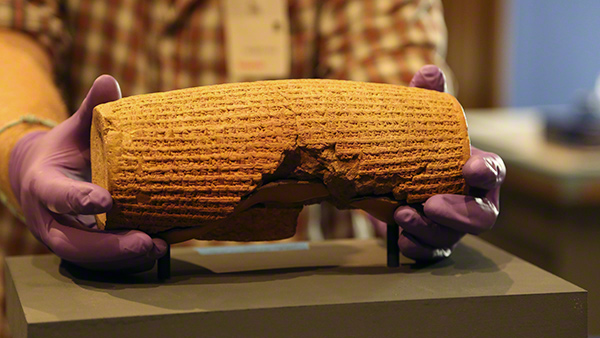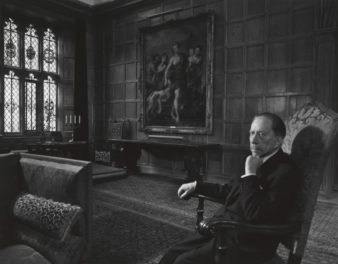What explains the Cyrus Cylinder’s unusual shape? Dr. John Curtis of the British Museum reveals the answer

The Cyrus Cylinder, Achaemenid, after 539 B.C. Terracotta, 22.9 x 10 cm. Image courtesy of and © The Trustees of the British Museum (2013). All rights reserved
It’s been likened to a football and a corncob for its unusual shape and diminutive size. The Cyrus Cylinder is one of the ancient world’s most important historical documents, but it’s also one that prompts a very basic question: Why is it shaped that way?
One answer comes from history. The barrel-shaped form was commonly used in ancient Mesopotamia for foundation deposits—inscriptions buried under significant structures such as city walls or temples. As a foreign conqueror, Cyrus used the cylinder shape to affirm his respect for local tradition.
But still the question remains: What does the cylindrical shape signify? For the answer we turned to Dr. John Curtis, Keeper of Special Middle East Projects at the British Museum, who wrote the book on the subject.

Dr. John Curtis in the galleries of The Cyrus Cylinder and Ancient Persia at the Getty Villa
Why is the Cyrus Cylinder shaped the way it is?
There’s no agreement about this, but I think it’s shaped that way because the text never starts and never finishes. It’s endlessly revolving. You come to the end and go seamlessly again onto the beginning. It’s a rather ingenious thing, really. It’s a different concept from a sheet of paper, with a start here and a finish there.If the Cyrus Cylinder never ends, what are the implications for its meaning?
I think it gives more majesty and authority to the document itself. Yes, I’m pretty sure that’s why they did it in that way—rather than on a tablet.What’s also interesting is that, even though it’s meant to be read by turning, when you stand in front of it, you’re looking at it “right way up.” If you go around to the back of the case, you’re looking at it upside down. You see what I mean?
This explains why the Cyrus Cylinder has a “front” and a “back.”
A number of people have said to me, if they look at it from the other side, “Why is it exhibited upside down?”

The Cyrus Cylinder, seen from the back, during installation at the Getty Villa. Achaemenid, after 539 B.C. Terracotta, 22.9 x 10 cm. The British Museum
So the Cylinder was meant to be read before it was buried?
It was a multipurpose thing, really. It’s partly a religious document, and was buried to ask for the ongoing protection of the god of Babylon. But at the same time, we know it contains a proclamation, and [recently discovered] tablet fragments make clear that there were copies of it sent all around the Persian Empire.I think it’s very likely that there were other cylinders buried by Cyrus in Babylon—it’s just that they haven’t been found yet.
See the Cyrus Cylinder from front, back, and side at the Getty Villa through December 8.




Comments on this post are now closed.